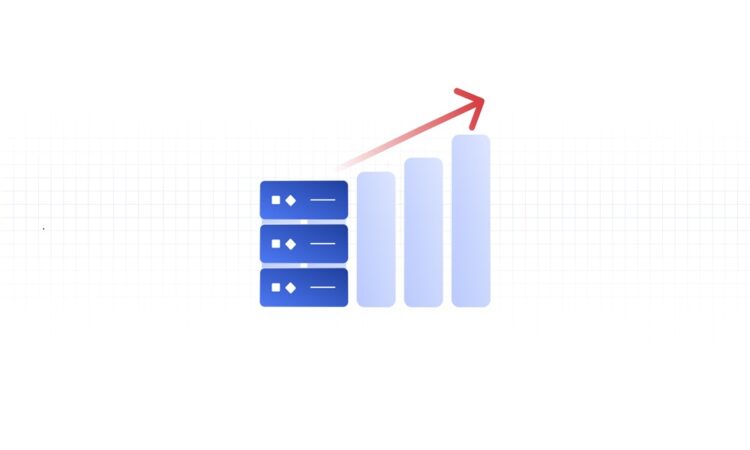
In recent years, serverless computing has become a popular approach to developing and deploying apps within the cloud. As you opt for serverless for startups, the developers can concentrate on code writing. Hence, you do not need to be stressed out about infrastructure management any more.
It results in reduced costs, faster time to market, and enhanced scalability. In this article, we are going to talk about the latest predictions and trends regarding the future of serverless architecture.
What is serverless architecture?
Serverless is recognized as an architecture that avoids the risks of managing the servers, adjusting them according to requests, and having the devOps engineers handle such infrastructure. Hence, all you need to consider is the product code and the product value.
Now, we are going to tell you about the benefits of choosing a serverless architecture. Check it out!
Scalability
A sudden rise in use can cause an interruption in a traditionally structured app with a fixed server space. Serverless-based apps will scale automatically with the increase in use and the growth of the customer base. Hence, the server starts up and shuts down, catering to the needs.
Time to market
You do not need any infrastructure to maintain it. Owing to its microservice nature, the serverless architecture is useful in deploying faster changes, thereby providing higher agility. Such an app is not a single monolithic stack. Here, the business logic gets divided into the function collections so that the vendor takes the necessary care to provision them. Hence, the developers should deploy the code bits, thereby launching the latest product.
Pay as you go
Pay as you go happens to be an attractive value proposition for start-ups. It is considered a good choice for startups as they are equipped with restricted resources. Owing to its flexible nature, the developers do not have to predict the server capacity. The function executes once it is invoked. Majority of the time, the customer invokes the majority of the time.
The future of serverless trends for startups
Serverless technology has come a long way. The architecture is sure to get better with time. With the rise in market cap forecasts, there will be a lot of opportunities for success. Now, we are going to talk about the future trends in serverless for startups:
Machine learning and artificial intelligence
Machine learning and artificial intelligence are sure to play an indispensable role. Both technologies need an ample amount of power and readiness to innovate, leaving startups and serverless as a wonderful combination to work with.
IoT apps
Integration with different IoT applications is going to be the next big thing. No matter how much data the IoT devices will produce, substantial resources are necessary to work with them. It becomes easier with the use of a serverless model.
Multi-cloud serverless architecture
The increase in multi-cloud serverless systems is expected to be another future trend of serverless. Once the team is coding the code and juggling several environments, the use of several clouds offers a bunch of flexibility. Thus, there will be less dependence on either service. Thus, it is useful in enhancing performance. Hence, it is easy to switch between different platforms.
Enhanced use of serverless computing
As business enterprises shift to the cloud, serverless computing happens to be a popular choice. By choosing the serverless architecture, the business enterprise pays for what they are using. So, they need to pay for a fixed computing price. Thus, there is a considerable decrease in costs. So, you can expect a rise in the adoption of serverless computing in the near future.
Better integration with machine learning
Serverless architecture happens to be a natural fit for different machine learning apps. Once machine learning becomes more prevalent, you will find an enhanced integration between machine learning and serverless computing. It provides the optimum choice for developers to create machine-learning apps. The best thing is that you do not need to be stressed about the underlying infrastructure.
Serverless containers
Serverless containers are regarded as an optimum choice for deploying apps. Serverless computing is not an exception to the rule. You are sure to find an emergence in serverless containers in the future. It provides scope to the developers to execute different containerized apps without the need to worry about the underlying infrastructure management.
Enhanced security
Speaking of computing, security remains a concern. Serverless computing is not an exception to the rule here. It is expected to witness improved security measures during the implementation of serverless computing. AWS provides a wide assortment of security measures for serverless services, which include access control, encryption, and network isolation.
Hybrid cloud environments
There are a wide assortment of business enterprises that are adopting a combination of cloud-based and on-premises infrastructure from the serverless development companies. You will find an increase in the integration between on-premises infrastructure and serverless computing. It provides the optimum choice for the business enterprise to create hybrid cloud environments. It offers the best opportunity for business enterprises to reap the benefits of serverless computing. Thus, you will be able to maintain the prerequisite control over on-premises infrastructure.
Edge computing
Edge computing involves data processing at the network edge instead of sending the same to the central server to process. Serverless computing happens to be a suitable option for edge computing. It offers the developers the scope to deploy the code to different devices at the network edge. It results in quicker processing times, thereby decreasing the latency.
To sum it up, serverless development happens to be an exciting technology area that is evolving faster. You will find enhanced adoption, better integration with machine learning, additional services, and improved security, along with the emergence of edge computing, serverless containers, and hybrid cloud environments. Such predictions and trends make it evident that serverless computing will play an integral role in the future of cloud computing.
